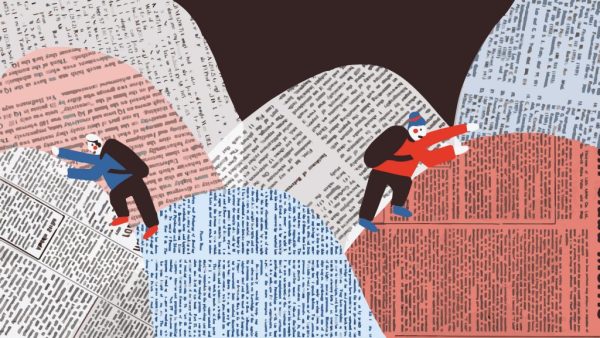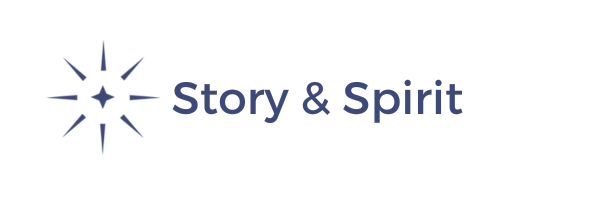During a time where words like “diversity,” “equity,” and “inclusion” are being flagged by the government, storytelling plays a more imperative role than ever. The way we not only tell those stories, but obtain them, matters.
If we are introducing the protagonists of stories through deficit framing, if we are not confirming the words or edits we use resonate with our protagonists, if we are not utilizing tools like “deep consent,” we are doing a disservice to our protagonists and their stories.
When someone makes the choice to share their story, they are vulnerably letting an audience in. Our job as story collectors, is to treat their stories, dignity, and mission with care.
In 2018, The Goodman Center connected with Story and Spirit’s Michael Kass to chat about Ethical Storytelling practices. Now, seven years later, we reconnected with Kass to discuss changes in the space, and why this work matters right now.

Michael Kass
The Goodman Center: We wanted to talk to you about any updates that have come into existence in the ethical storytelling word since we last spoke in 2018.
Michael Kass: In 2018, [Ethical Storytelling] wasn’t a field yet. And now it is. There are a ton of resources and toolkits that have been produced really since 2020 with BLM and George Floyd and the community-centric fundraising movement, which also wasn’t a thing [in 2018].
So now there’s an entire field of practice around this. People more often than not at least have sort of heard of ethical storytelling and have an idea of what it means, which simply wasn’t the case when we had that first conversation.

TGC: What do you think spurred on that shift?
MK: I think it’s a conversation that’s been had for decades in nonprofits, but off in the corners. Nobody’s ever felt good about the way nonprofits tell stories.
I remember when I was on staff doing fundraising work, we outsourced a fundraising letter to a consultant, and it was the most horrific thing. It was like “Jasmine showed up on the door of our clinic covered in blood screaming.”
And I think the reason Ethical Storytelling has blown up is it’s finally a conversation that’s being had more publicly and research around it is being funded. There was a major research report around International Aid by David Girling and Jess Crombie that directly compared a fundraising package that was designed and led by people with lived experience with one designed by a professional fundraiser.
It showed that the participant-led package outperformed the professional fundraiser one, which did not use ethical storytelling practices, by 35% across the board.
I also think that Ethical Storytelling fits into the growing conversation around decolonization in general, and in the nonprofit and fundraising space specifically.
Edgar Villanueva puts it really nicely in Decolonizing Wealth. He says, colonizing practices divide, control, and exploit. Decolonizing practices, like ethical storytelling, have, at their center, connection, relationship, and belonging.
TGC: What do you think Ethical Storytelling looks like with the particular political climate that we’re in?
MK: DEI or diversity or equity, those terms became terms of art that were just used as blanket terms. People said, “oh, yeah, we do DEI.”
Well, what does that mean?
What I love about Ethical Storytelling is that you’re embodying all of the values of that field, but you don’t have to use that language in order to advance the cause.
In other words, if I talk about a room, and I say, “at the table we had people from this walk of life and this walk of life and they interacted in these beautiful ways,” I don’t have to say, “we did diversity.”
It’s the classic storytelling tactic of “show, don’t tell.” People get it.
 TGC: Do you feel that the definition of ethical storytelling has changed?
TGC: Do you feel that the definition of ethical storytelling has changed?
MK: I’ve actually started defining Ethical Storytelling as a process instead of a thing. And that process is defined by a certain set of tools, practices, and conversations. But when people ask, “what’s the definition?” I say, “aligns with your mission and lifts up the voices, dignity, and humanity of all.”
But then they ask, “how do I do that?” and that’s a bigger conversation. There are definitely concrete tools that have now been documented in all sorts of places. But they take time to integrate well and it almost always requires culture change.
Organizations that do it well really invest the time because they understand how powerful it is for every aspect of their operations to be in coherence and alignment with their mission.
If you’re serving folks who are experiencing homelessness and part of your mission is to uplift their voices and help them feel a sense of dignity, and all you do is tell stories about how they were drug addicts and then lost their homes and then they found you and they’re better. Then you’re out of alignment with yourself and that can’t help but compromise your ability to achieve your mission.
Ethical Storytelling is a powerful way of bringing organizational culture back into alignment with mission and vision so that our impact can be deeper, more expansive, and more in integrity. That’s common sense and it’s what the research is showing.
It can be really challenging because the forces of inertia are really powerful. And so, depending on where you are geographically, some funders might not be on board with this Ethical Storytelling thing. They might really be addicted to those unethical stories of trauma exploitation or poverty exploitation. And there’s scientific reasons for that. It triggers our dopamine. It’s like, “ooh, yay, yum, yum, suffering that I get to alleviate.”
That’s where unethical storytelling caters to the savior complex. At a deeper level, what Ethical Storytelling is doing is rewiring the whole pleasure, reward, savior complex of the nonprofit and philanthropic system.

TGC: Is there anything about Ethical Storytelling that you want to touch on that you feel like we haven’t spoken about?
MK: If you visit the Ethical Storytelling resource page, there’s a great resource about how to have better conversations about Ethical Storytelling. There’s some really great material that didn’t exist even three years ago. The Dignified Storytelling Handbook is phenomenal, with documented step-by-step processes.
That’s the big one. There are so many resources and toolkits available now.
Story and Spirit provides a multitude of resources as you and your organization continue practicing Ethical Storytelling. Asset framing, deep consent, and transparency all play imperative roles in obtaining and sharing stories more ethically.
To learn more ways to integrate ethical storytelling, register for our “Ethical Storytelling: The Case for Asset Framing” workshop November 18 & 20.

